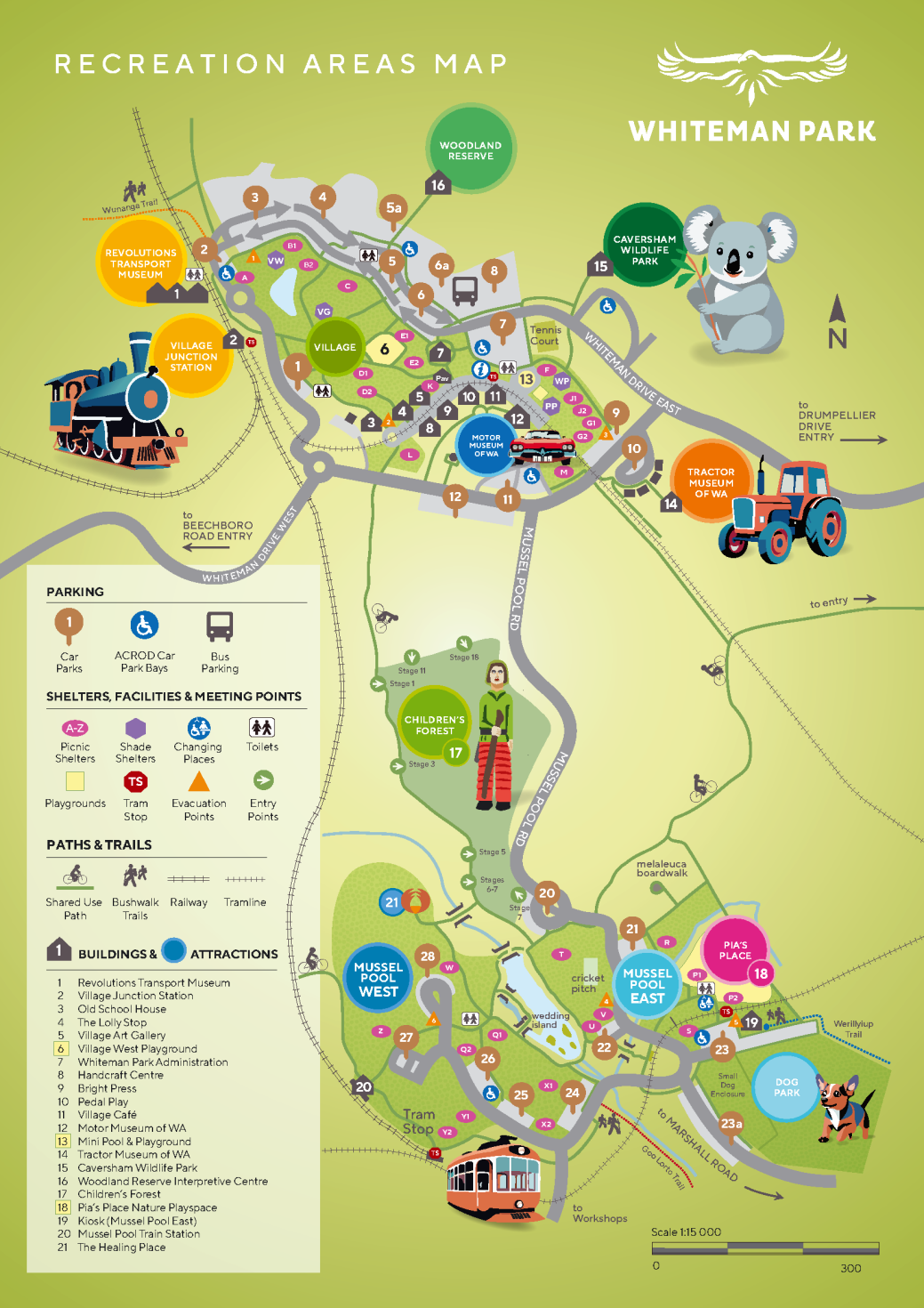The wonder of wedge-tails
20 January 2022

There are few places in the world where a landscape’s largest, apex predator survives, let alone thrives, close to the centre of its capital city. But with vast expanses of healthy bushland relatively free from human disturbance, and booming populations of prey animals, Whiteman Park is one such place.
So, what’s the predator?
Waalitj is the Aboriginal Noongar name for the Park’s iconic wedge-tailed eagle or ‘wedgie’, one of Australia’s three key terrestrial (land-based) apex predators. While the dingo and perentie (a giant lizard) top the food chain on the ground, the ‘wedgie’ is the largest and most powerful predator to grace the Australian sky!
This widespread eagle species has a wingspan of well over two metres, talon-clad fists capable of crushing a range of medium-sized mammals and birds, and acute vision that can detect the movements of its prey from more than a kilometre away. But such sensitive vision also means it is particularly vulnerable to disturbance, and despite such a pronounced predatory position in the food chain, it is actually a very shy bird whose efforts to live peacefully are easily compromised.



Image (L-R): A wedge-tailed eagles nest; an eagle flies overhead (photo by P. Caddy); perched watching the world (photo by P. Caddy).
Some birds, such as the Australian magpie, are totally unafraid of humans, aggressively defending their nest site during breeding. Large eagles, however, are notorious for being put off by human activity. They can abandon nests if humans come close for long periods during incubation or when chicks are small, and eventually abandon an entire breeding home range if this activity becomes too frequent. But Whiteman Park’s extensive conservation area (that is bigger than 1,500 AFL football fields!), and its surrounding buffer of pastoral land, provides the perfect pocket for two wedge-tailed eagle pairs to remain ‘socially distanced’.
One pair of wedgies has been known to breed in the expansive patch of banskia woodlands to the north of the Village since at least the mid-1990s. An early report by a prominent ornithologist suggested “the persistence of these eagles presents a challenge to the management of the Park”. But they have persisted, against the odds, and despite extensive development surrounding the Park in the last three decades, a situation that normally places too much pressure on wildlife. What’s more, a second pair has established a breeding site at the Park in recent years too.



Images (L-R): Eaglets atop their nest; 2018's eaglets soon after hatching; the 2018 eaglets after banding (all photos courtesy of S. Cherriman).
So why is the species so successful in Whiteman Park?
We spoke to local eagle expert and one of the Park’s consultant ecologists, Simon Cherriman, to find out.
Simon reflects on how an "ambitious” ‘Woodland Reserve’ project to return native mammals like the woylie and tammar wallaby to Whiteman Park in 2010, was a pivotal moment in the eagle’s future. "Despite some local opposition to this project, spurred on by the perception that ‘rabbit reduction’ would reduce the eagles’ food, it was obvious from an ecological perspective that the wedgies would adapt to changing prey and benefit in the long-term. These predictions indeed came true."
“In 2013 I was excited to find woylie remains in an eagle’s nest, the first indication that these native marsupials had not only become well established, but were numerous enough to be hunted by a native predator."
Years later, the eagles have continued to pick off occasional individuals from the thriving populations of reintroduced woylies and wallabies, while continuing to feed on birds, reptiles, a growing number of quenda (Southern brown bandicoots), and the rabbits that occur outside Woodland Reserve. Simon explained, "This increasingly diverse diet is far more ‘healthy’ for these eagles than the rabbits that dominated their food earlier.”
The discovery by Park staff of a dead juvenile eagle at the southern end of the Park in early 2016 provided the first piece of evidence that a second pair had ‘moved in’. Simon exclaimed, "It was exciting to follow up and find two nests in a nesting area new to the study, and eventually observe an eagle pair whose plumage indicated that they had commenced breeding as sub-adults." The establishment of this pair’s breeding area was almost certainly the result of a swelling population of Western grey kangaroos at the southern end of the Park, he observed.
In 2017, the Park supported Simon as he undertook research into the dispersal of young eagles after they left their parents’ home range. It was incredible to see one of these youngsters, Darlyininy (a Noongar word for ‘go swiftly’) travel 3800km to Buchanan in the Northern Territory just four weeks after he 'left home’!! You can read more about Darlyininy’s travels on Simon's Instagram page.
Ongoing research and monitoring is critical to protect iconic species such as the wedge-tailed eagle (Aquila audax), and we have passionate people like Simon who supports the Park, and the species, to achieve this. Next time you’re in the Park, be sure to keep an eye in the sky to give yourself a chance of spotting one of our resident ‘wedgies’ soaring overhead!
Image: Three wedge-tailed eagles flying overhead


